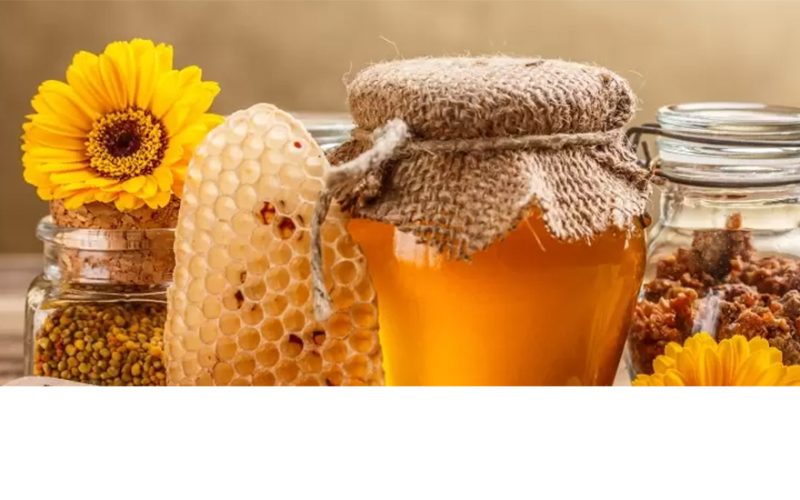PMC Research: prospects ‘sweet’ for Georgia’s honey sector amid growing international demand
Georgia not only has a history of honey, but also a promising future, says PMC Research’s latest sectoral snapshot, which shows the sweet substance has posted substantial export growth in recent years as it continues to explore new high-value markets.
Georgia’s honey sector
Georgian honey is not only delicious but also believed by some to be the oldest in the world. Discovered less than 50 kilometers south of Tbilisi in a Bronze Age burial site and dating back to 3400 BCE – some 2000 years older than Egyptian samples discovered in the tomb of King Tut previously considered to be the oldest – Georgia has a rich history of beekeeping and natural conditions conducive to making sought-after honey. Its woods’ diverse flora, a variety of subtropical climate zones, and a special breed of Caucasian gray mountain honeybee all contribute to the region’s excellent potential for producing both mono- and poly-floral honey.
But despite increasing demand around the world, with the global honey market expected to grow from $8.5 billion in 2022 to $12.7 billion by 2029 as consumers increasingly seek out natural and organic sweeteners, production growth in Georgia remains relatively slow. Between 2016 and 2020, the country’s annual average growth rate of honey production was 4%, equal to around 2400 tons, notes PMC Research’s latest sectoral report.
This slow growth, says researcher Nana Kajaia, is in part due to the small-scale production used to produce most honey in Georgia. “Almost all production of honey comes from small family holdings,” she says, noting that between 2016 and 2022, agricultural enterprises on average covered just 6% of total production. Of the 14,000 beekeepers estimated to be operating in Georgia, many have no official registration, with only 115 businesses registered in the beekeeping sector as many instead choose to produce and sell within their local markets.
“With smaller production comes greater inefficiency but also a lack of knowledge and expertise in relation to contemporary beekeeping techniques and wider sales and distribution,” she adds. “This has been a major impetus for production growth.”

International trade
Despite these challenges in production, trade statistics show that Georgia’s export market has grown substantially since 2019 as the country explores new markets and takes advantage of its free trade deal with the EU. In 2022, the export value of Georgian honey increased 79% YoY and the export volume rose 49% YoY. This, says PMC Research’s Kajaia, is indicative of the higher value markets and quality honey being exported. “In 2022, the value of exports largely outpaced volume, which tells us Georgian honey is selling for higher prices. This is, in part, due to exporters moving into newer markets,” among which France and Bulgaria together accounted for more than half of export volume and value. “If we look at honey exports to the EU, for instance – it was 86 times higher than exports to CIS countries – indicating that honey producers are really turning their attention to new, higher value markets.”
Export prices have fluctuated substantially in recent years, reaching a high of $8.8/kg in 2019 and a low of $4.6/kg in 2022. Kajaia says this high volatility can be explained by differences in the countries to which honey was traded in different years. “Georgia is a new player on the international honey market and is still exploring where consistent demand is. As it begins to establish long-term relationships with certain markets, we expect these prices to stabilize towards the higher end of this price range.”
Prospects
Georgia’s honey sector, marked by relatively slow-growing production but high export interest from abroad, has the potential to develop into an increasingly lucrative market, says PMC Research’s Kajaia. “In order to export honey abroad, it must undergo lab testing and certification to ensure it meets quality standards. Currently,” she says, “a number of exporters have reported that they are unable to fill demand from external markets because their stock of certified, exportable honey has run out.”

But important steps are being taken to remedy this issue. “We now have labs in Georgia that are able to provide certification,” she says, noting that previously honey producers were forced to send samples abroad. “Since the beginning of 2023, under the FAO project Georgia’s National Animal Identification and Traceability System (NAITS), the National Food Agency has also been ensuring the registration of beekeepers free of charge. This identification of beekeeping entities and their registration will ensure the traceability of honey, which is an important factor in food safety.”
In addition to these efforts to lower the regulatory hurdles for exporting high quality honey, Kajaia says there are also ongoing efforts to share expertise among beekeepers. “The Georgian Beekeepers Union is playing an important role here in helping to share best practices and knowledge,” she says. “In 2021, for instance, beekeepers saw large-scale destruction of hives around the country as the Varroidae mite developed a pesticide resistance and killed colonies, resulting in honey production declining 16.7% YoY. The union worked within the community of beekeepers to share expertise and practices to protect against the mite. Further to that,” she adds, “they’ve been instrumental in helping small beekeepers apply for small business grants through Enterprise Georgia and the Rural Development Agency.”
“While Georgia’s honey export market is still developing and production is not particularly large,” says Kajaia, “it has huge potential. In the past couple of years, external markets have demonstrated increasing demand for high-quality honey from Georgia. As producers become better equipped to supply and export it, we are confident the sector will continue to grow.”

